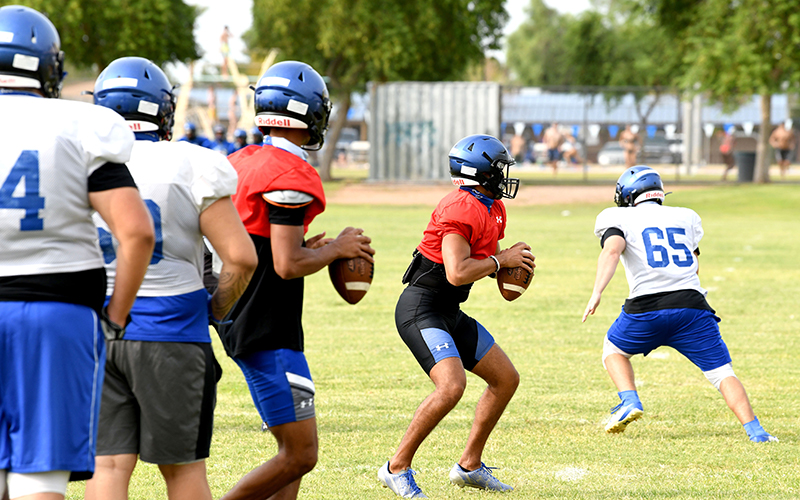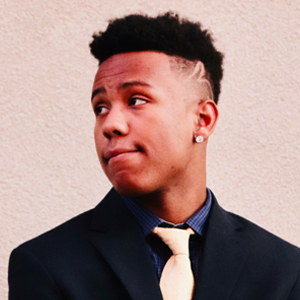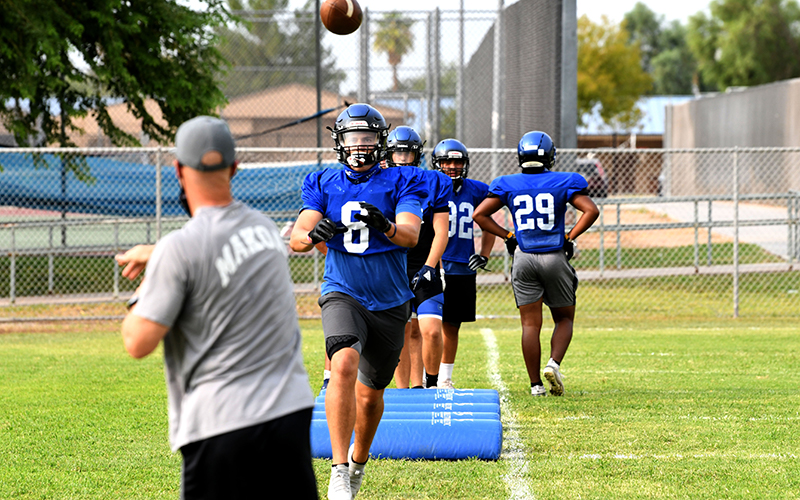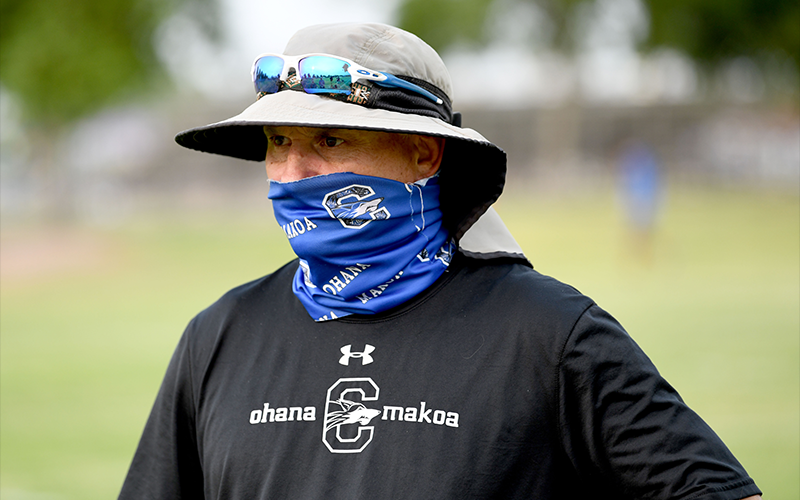PHOENIX – When the executive board of the Arizona Interscholastic Association recently approved updated recommendations from its Sports Medicine Advisory Committee, it cleared the way for the delayed 2020 fall sports season to kick off.
However, some school districts might still decide not to play any sports in the fall because of safety concerns amid the COVID-19 pandemic, which raises questions about options athletes at those schools will have – including transferring to another school – should they decide that they want to play.
David Hines, executive director of the AIA and the governing body of Arizona high school sports, said policies are already in place to address those concerns.
“That is actually in our bylaws,” Hines said. “I’ll give an example: If a student wants to play football and his school has chosen not to play football, he can transfer to the next closest school that is playing football and be eligible immediately.”
That rule applies whether there is a pandemic or not.
Multi-sport athletes must be careful, though. For example, an athlete who plays football and basketball will clear the AIA’s waiver for football season if his school cancels its season, but that does not necessarily mean he would clear the waiver for basketball in the winter. Hines said existing rules cover that as well.
“If that student played basketball last year at his previous school, and that school is playing basketball this year, then that student becomes a transfer student for basketball and has to sit for half of the (basketball season),” Hines said. “The second sport (winter) or the third sport (in the spring,) they haven’t canceled yet, so it doesn’t apply that you get a free pass.”
However, Hines said winter and spring athletes do have the option of applying for hardship if their school ends up canceling winter or spring sports, and the AIA is likely to approve their eligibility.

As the AIA finalizes plans for the start of fall competition, coaches and athletes are looking forward to returning to fields, courts and courses. (Photo by Kevin Hurley/Cronkite News)
“At that point, we would recommend to the school to bring forward a hardship,” Hines said. “Technically, he transferred before they canceled basketball season. However, if the school that he transferred from does not play basketball, it would be reasonable for us to (say), ‘Why would we argue (against) this?'”
Multisport athletes might have to decide if the sport they compete in this fall is the most important to them because, if they transfer, they might have to sit out part of their next sport’s season, depending on how the pandemic unfolds and whether their original school competes in the athlete’s second or third sport.
The AIA improved the likelihood of schools playing fall sports when the association switched from metrics that it originally had in place to those being used by the Arizona State Health Department and various county health departments. Currently, 10 of Arizona’s 15 counties are in all green (good standing) based on the new metrics. The green counties include Maricopa and Pima counties, which account for 75% of the AIA’s member schools.
Here is the specific wording of the AIA bylaws:
“When a sport or nonathletic activity is dropped by a governing board, a student may transfer to a school that offers that sport or nonathletic activity and shall be eligible only in the sport or nonathletic activity that has been dropped at the school from which the student transferred. Said eligibility will be granted when the student enrolls in one of the following schools:
– A private or parochial high school in the county in which the parents are domiciled.
– The public high school within the same school district closest to the domicile of the parents.
– In the event the district does not offer the sport or nonathletic activity in any of its schools, the student may transfer to the public high school of another district closest to the domicile of the parents.
– The transfer rule shall apply to other interscholastic sports and activities in which the student participates.”
The AIA also developed protocols to help control any outbreak should one occur within a fall sports team, breaking up programs into groups and applying metrics based on the size of the group.
“Varsity football is a group, (junior varsity) football is a group, and freshman football is a different group,” Hines said. “In (each) group, if you have 25 or more people, then if you have three or more cases of COVID-19 that program would have to shut down for a 14-day period. If (the group) is less than 25 people and you have two people with COVID-19, then that program would have to shut down for a 14-day period. This is for any fall sport, not just football.”
High schools’ responses to the pandemic are ever-evolving. The Arizona Republic reported Monday that the Phoenix Union High School District’s alternative fall sports season will begin competition by the end of October and that reservation schools in the Northeast Region plan to begin sports in January, with football starting in March.
As the AIA finalizes plans for the start of fall competition, coaches and athletes are looking forward to returning to fields, courts and courses. And some coaches indicated that the pandemic might even have created more interest among their students in getting involved in sports.
“The most interesting thing for me as an athletic administrator is the number of students trying out for sports teams,” said Sister Lynn Winsor, the athletic director at Xavier Prep and long-time coach of the school’s dominating golf program.
“For example, I coach with the golf team and we had 20 girls try out this year, which is five or six more (than usual). Badminton only took 18 (girls), but they had 40 try out. There are 40 girls on cross country because so many girls tried out. For our girls’ tennis, believe it or not, we had 94 girls try out for it.”
Desert Vista girls cross-country coach Megan Ping said sports have been good for the mental health of her runners.
“Cross-country definitely attracts very strong individuals, so they are ready to compete and are super excited to compete,” Ping said.”They’ve all stayed in touch through social media, and now that they’ve been able to get together face to face, I’d say that they’re pretty resilient.”
Pinnacle girls golf coach Charlie Wilde has seen the same excitement in his players.
“The kids have some normalcy, and I think it really helps them mentally … having something to do,” Wilde said. “To be able to talk about their classes, to be able to talk about their social life, to be able to interact with their friends, to be able to talk about golf – I think it’s huge for their mental state.”


